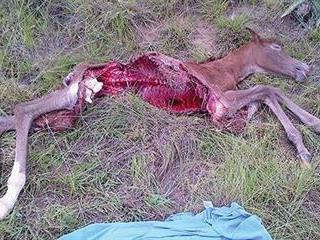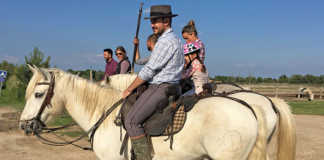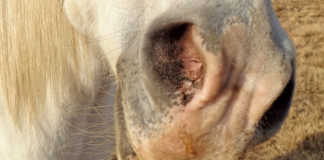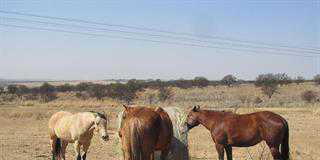
Currently, there is a moratorium on the hunting of leopards. This is because the number of Panthera pardus in South Africa is unknown and trophy hunting, the ‘excessive shooting’ of leopards preying on livestock, the use of leopard skins for cultural purposes and poor monitoring of hunts could threaten the survival of the species.
Leopards are listed as ‘threatened or protected species’ (TOPS) in the 2007 regulations of the 2004 National Environmental Management Diversity Act (NEMA). However, the same document recognises that they are also damage-causing animals.
Previously, if a leopard was a problem in a farming area, dogs were used to track it and a party of farmers would shoot it. The new regulations mean that you cannot, after finding your dead foal, simply go out and shoot the nearest leopard. This aside, your first question should be: how can I be sure a leopard killed the foal?
Although leopards are known to kill zebra foals in the Kruger National Park and elsewhere, research suggests the culprits in these instances are more likely to be other predators, such as jackals, caracals and domestic dogs. Indeed, outside a game reserve, a foal is more likely to be killed and eaten by stray dogs than a leopard.
Clearly, then, you need to be able to identify the signs of a leopard attack. Consider the following:
- Leopards kill their prey by grasping the throat or back of the neck.
- Feeding mainly takes place between the back legs and shoulder.
- Look for spoor or ‘pug marks’ in the vicinity as well as scat (faeces).
Leopards will also often drag the prey away from the site of the kill and may even put it in a tree for later consumption. Bear in mind, though, that even if the leopard has eaten the foal, it does not mean it made the kill. Leopards are scavengers and will consume dead animals.
Hunting the hunter
Assuming you are able to confirm that a leopard has indeed killed the foal, you cannot shoot it yourself, except in self-defence. Even a vet cannot be brought in to dart or capture a leopard unless a permit is obtained from the provincial department of environmental affairs.
Fortunately, leopards outside of game reserves are known to be shy and are inclined to cover a territory of more than 60km, so it may well move away from your farm by itself. It’s best to collaborate with neighbours if there are several sightings or kills in a farming area as this will help you obtain the permit needed to set a leopard trap in a suitable location.
Protecting your horses
Dogs are not a deterrent for leopards. In fact, they are preferred prey. A leopard will easily kill a large dog such as a Rottweiler or Boerboel and carry it away. Another indicator of a leopard in the area is when many dogs go missing within a relatively short time.
Young animals are most at risk of predation, but horses are seldom taken if they run in a herd as an adult stallion or large mares will attack a leopard that approaches the herd, especially when there are foals. They will also see off packs of dogs. A single mare and foal are more at risk, especially just after foaling, and should rather be kept in a stable or close to the homestead.
Dr Mac is an academic, a practising equine veterinarian and a stud owner.













